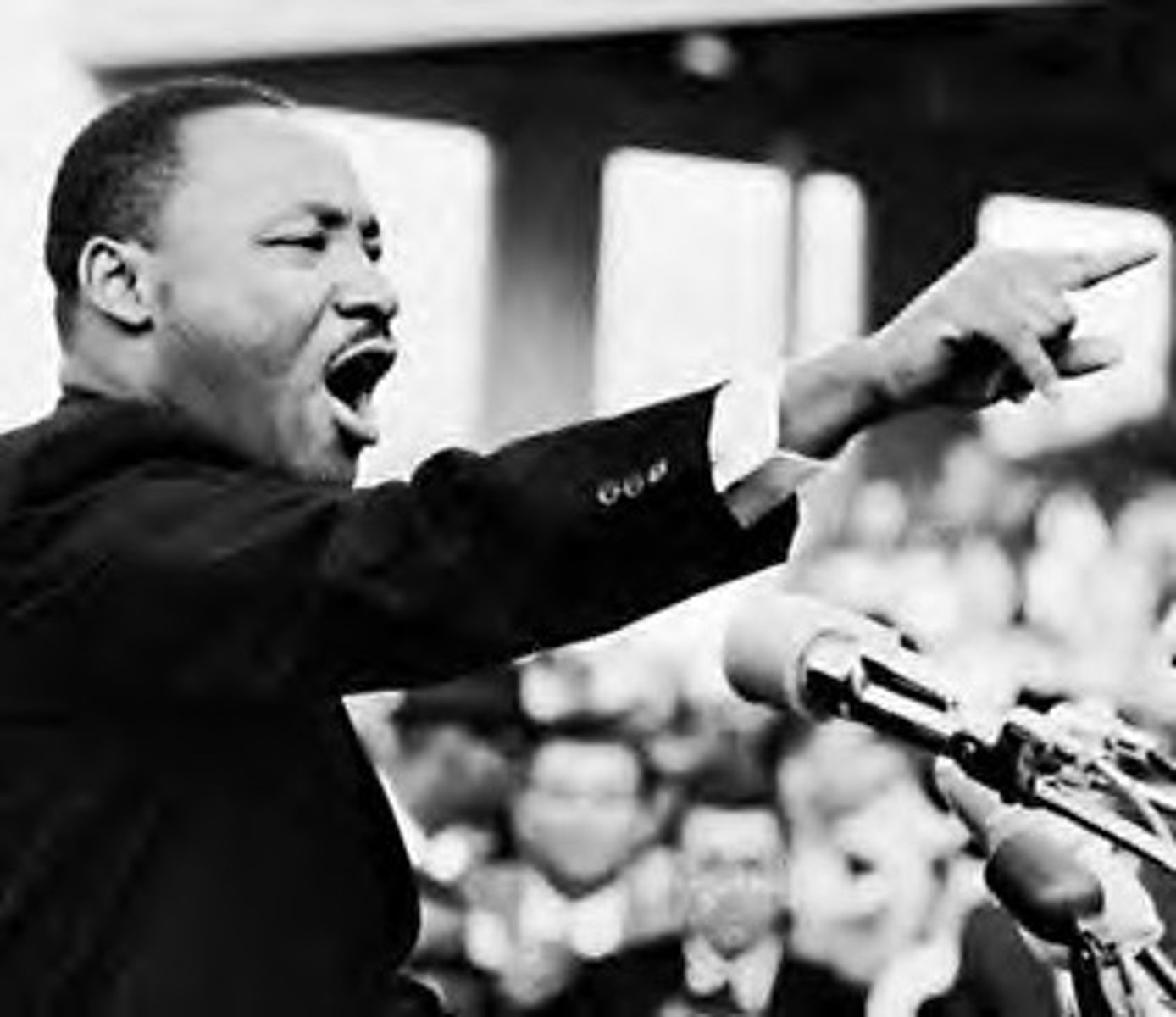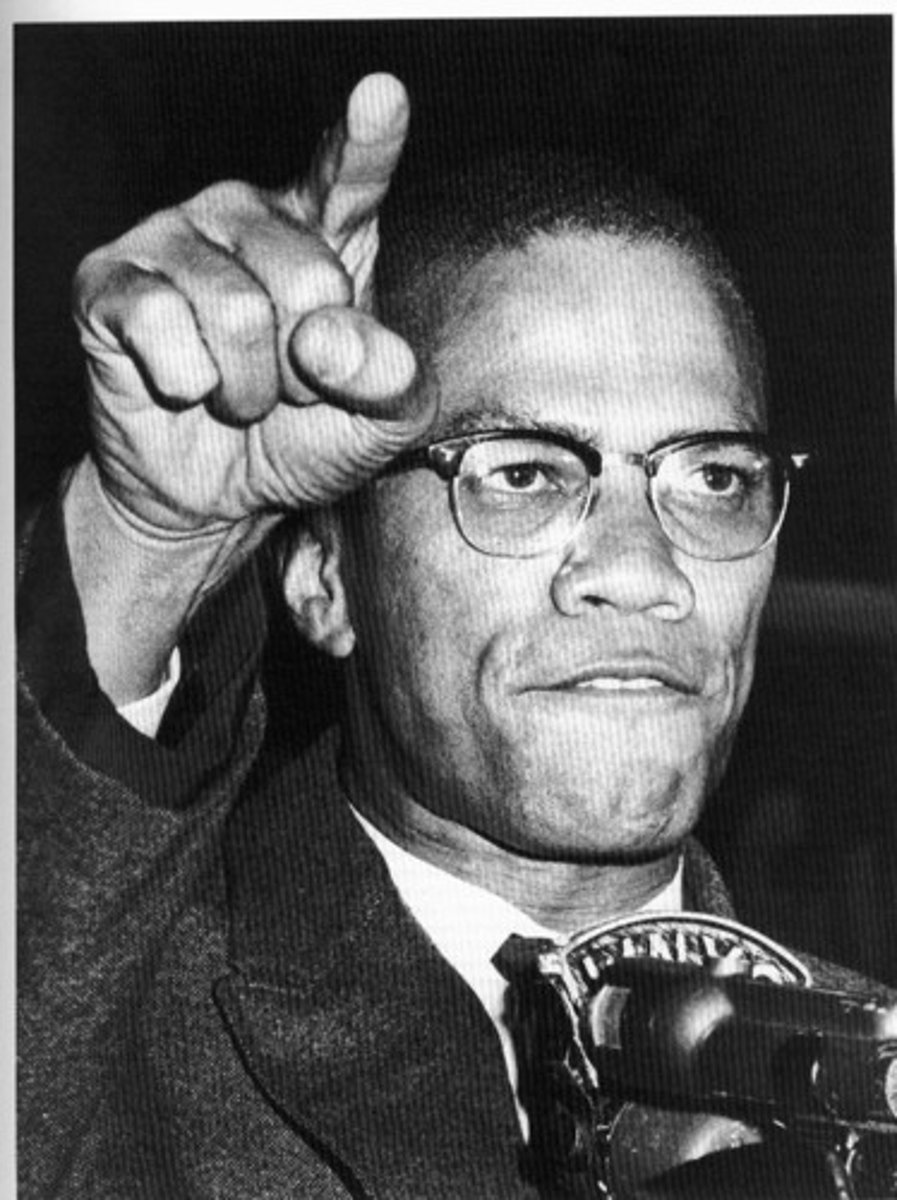APUSH: Period 8 (1945-1980)
1/61
There's no tags or description
Looks like no tags are added yet.
Name | Mastery | Learn | Test | Matching | Spaced |
|---|
No study sessions yet.
62 Terms
Cold War & Containment
Year: 1947-1991 (focus on 1947-1980 for Period 8)
Summary: The U.S. sought to prevent the spread of communism globally, using political, economic, and military pressure.
Significance: Shaped nearly all foreign and domestic policy in the postwar era and justified interventions like Korea and Vietnam.
Non-Aligned Movement
Year: Founded in 1961
Summary: A group of countries—mainly from Asia, Africa, and Latin America—that chose not to formally align with either the U.S. or the Soviet Union during the Cold War.
Significance: Reflected the desire of many newly independent nations to maintain sovereignty, promote peaceful coexistence, and resist Cold War power politics. It highlighted the rise of the Global South as a third force in international relations.
Korean War
Year: 1950-1953
Summary: War between communist North Korea (supported by China and USSR) and capitalist South Korea (supported by the U.S. and UN forces) after the North invaded the South.
Significance: First military application of containment policy; ended in a stalemate with Korea still divided at the 38th parallel; set precedent for future Cold War military actions.
Vietnam War
Year: 1955-1975 (major U.S. involvement from 1964-1973)
Summary: The U.S. backed South Vietnam in a long, unpopular war against communist North Vietnam and the Viet Cong.
Significance: Most divisive war in U.S. history; sparked major anti-war protests, led to limits on presidential war powers (War Powers Act), and eroded public trust in government.
Postwar Liberalism
Year: 1945-1968
Summary: Era of strong federal government action to promote social welfare, civil rights, and economic opportunity.
Significance: Led to major reforms like the Great Society, but also sparked conservative backlash.
Great Society
Year: 1964-1967
Summary: President Lyndon B. Johnson's domestic reform program aimed at ending poverty and racial injustice in the U.S.
Significance: Created key programs like Medicare, Medicaid, Head Start, and the Civil Rights Act of 1964. It was the high point of postwar liberalism, expanding the federal government's role in health care, education, and civil rights.
Postwar Decolonization
Year: 1945-1970s
Summary: Many African, Asian, and Caribbean nations gained independence from European powers.
Significance: Created Cold War battlegrounds as the U.S. and USSR competed for global influence.
Baby Boom
Year: 1946-1964
Summary: Sharp increase in U.S. birthrate after WWII.
Significance: Fueled economic growth, suburban expansion, and long-term demographic shifts.
Challenges to Conformity
Year: 1950s-1960s
Summary: Groups like the Beatniks, civil rights activists, and youth culture rejected mainstream norms.
Significance: Laid the foundation for 1960s counterculture and protest movements.
Sputnik (1957)
Year: 1957
Summary: The Soviet Union launched the world's first artificial satellite into orbit.
Significance: Shocked the U.S. public and government; raised fears of Soviet technological superiority and nuclear missile capabilities, kicking off the Space Race.
U.S. Space Race
Year: 1958+
Summary: In reaction to Sputnik, the U.S. created NASA, expanded science and math education, and invested heavily in space exploration.
Significance: Demonstrated Cold War competition beyond Earth; culminated in the Apollo 11 Moon landing in 1969, a major symbol of U.S. global leadership.
Levittown
Year: Late 1940s-1950s
Summary: Mass-produced suburban housing developments built by William Levitt.
Significance: Symbolized postwar suburbanization and racial segregation through restrictive covenants
Rock & Roll and Beatniks
Year: 1950s
Summary: Youth embraced rebellious music and the Beat movement challenged materialism and conformity.
Significance: Helped spark the countercultural revolution and widened the generation gap.
Counterculture of the 1960s
Year: Mid-1960s-early 1970s
Summary: Youth movement that rejected traditional values, materialism, and the Vietnam War; embraced peace, civil rights, drugs, and alternative lifestyles.
Significance: Sparked social change and cultural transformation, but also led to conservative backlash in the 1970s.
Lyndon Johnson's Great Society
Year: 1964-1967
Summary: LBJ's domestic reform program focused on eliminating poverty and racial injustice.
Significance: Created Medicare, Medicaid, Head Start, and civil rights laws; high point of postwar liberalism.
Détente
Year: 1970s
Summary: Period of eased tensions between the U.S. and Soviet Union under Nixon and Ford.
Significance: Resulted in arms control agreements like SALT and increased diplomacy during the Cold War.
SALT (1 & 2)
Year: SALT I (1972), SALT II (1979)
Summary: Agreements between the U.S. and the Soviet Union to limit the growth of nuclear weapons arsenals during the Cold War.
SALT I (under Nixon) froze the number of certain nuclear weapons and led to the ABM Treaty.
SALT II (under Carter) sought deeper limits but was never ratified due to Soviet actions in Afghanistan.
Significance: Major component of détente, these talks marked a turning point in U.S.-Soviet relations by promoting arms control and reducing the risk of nuclear war.
Vietnam War (expanded)
Year: 1955-1975
Summary: U.S. supported South Vietnam in a long war against communist North Vietnam.
Significance: Became the most controversial U.S. war, leading to mass protests, media skepticism, and limits on presidential war powers.
Gulf of Tonkin Resolution
Year: 1964
Summary: Gave President Johnson broad military powers in Vietnam after alleged attacks on U.S. ships.
Significance: Marked the official escalation of U.S. involvement; later criticized for unchecked executive power.
MAD Theory & Nuclear Arms Race
Year: 1950s-1970s
Summary: Mutually Assured Destruction meant both the U.S. and USSR would be destroyed in a nuclear war.
Significance: Prevented direct conflict but led to an expensive and dangerous arms buildup.
Cuban Missile Crisis
Year: 1962
Summary: A 13-day standoff between the U.S. and USSR over Soviet nuclear missiles in Cuba.
Significance: Closest the world came to nuclear war; ended with secret diplomacy and U.S. promise not to invade Cuba.
Causes of the Cuban Missile Crisis
Year: 1962
Summary: The Soviet Union secretly placed nuclear missiles in Cuba, just 90 miles from the U.S. mainland, to counter U.S. missiles in Turkey and protect Cuba from U.S. invasion after the failed Bay of Pigs attack.
Significance: Triggered a 13-day standoff between the U.S. and USSR, bringing the world to the brink of nuclear war
Bays of Pigs Invasion
Bay of Pigs Invasion
Year: 1961
Summary: A failed U.S.-backed mission where Cuban exiles attempted to overthrow Fidel Castro's communist government in Cuba.
Significance: The disaster embarrassed the Kennedy administration, strengthened Castro's power, and pushed Cuba closer to the Soviet Union, directly contributing to the Cuban Missile Crisis in 1962.
Students for a Democratic Society (SDS)
Year: Founded 1960
Summary: A student activist organization that pushed for participatory democracy, civil rights, and opposition to the Vietnam War.
Significance: Helped launch the New Left; played a key role in organizing campus protests.
Kent State Shooting
Year: 1970
Summary: During a protest against the U.S. invasion of Cambodia during the Vietnam War, National Guard troops opened fire on unarmed student protesters at Kent State University in Ohio, killing four and injuring nine.
Significance: Symbolized the deep public division over the Vietnam War, increased anti-war sentiment, and raised questions about government use of force against its own citizens.
Free Speech Movement
Year: 1964 Summary: Began at UC Berkeley when students protested restrictions on political activities.
Significance: Sparked nationwide student activism and connected to broader civil liberties debates.
Military-Industrial Complex
Year: Warned by Eisenhower in 1961
Summary: The close relationship between the military and defense contractors.
Significance: Eisenhower cautioned it could undermine democracy and promote unnecessary war.
Middle East Oil Crisis
Year: 1973
Summary: OPEC nations cut oil exports to the U.S. after U.S. support for Israel in the Yom Kippur War.
Significance: Led to oil shortages, gas lines, and inflation; revealed U.S. dependence on foreign oil.
African American Civil Rights Movement
Year: 1954-1968
Summary: Mass movement to end segregation and secure equal rights through legal challenges, protests, and civil disobedience.
Significance: Led to landmark laws like the Civil Rights Act and Voting Rights Act; deeply reshaped American society.
Martin Luther King Jr.
Year: 1955-1968
Summary: Civil rights leader who championed nonviolent protest and delivered the "I Have a Dream" speech.
Significance: Key figure behind Montgomery Bus Boycott, March on Washington, and Voting Rights Act.

Malcolm X
Year: Active 1950s-1965
Summary: Advocated for Black empowerment and self-defense; criticized integrationist goals of mainstream civil rights.
Significance: Influenced the rise of Black Power and cultural pride

Stokely Carmichael
Year: Mid-to-late 1960s
Summary: Former SNCC leader who popularized the term "Black Power."
Significance: Represented a shift from nonviolence to more militant approaches to civil rights.
Montgomery Bus Boycott
Year: 1955-1956
Summary: A year-long boycott of Montgomery, Alabama's segregated bus system, sparked by Rosa Parks' arrest for refusing to give up her seat to a white passenger.
Significance: Led to a Supreme Court ruling desegregating buses, launched Martin Luther King Jr. as a national civil rights leader, and became a model for nonviolent protest in the movement.
Black Panther Party
Year: Founded in 1966
Summary: A revolutionary Black nationalist and socialist organization founded by Huey Newton and Bobby Seale in Oakland, California, to challenge police brutality and systemic racism.
Significance: Advocated for self-defense, community programs (like free breakfast and health clinics), and Black empowerment. Criticized for militancy but made lasting contributions to the civil rights movement and brought national attention to issues of racial injustice.
Redlining
Year: 1930s-1970s (major focus during postwar boom)
Summary: Discriminatory practice where banks and the federal government denied loans to nonwhite neighborhoods.
Significance: Institutionalized housing segregation and contributed to the racial wealth gap.
Desegregation of the Armed Services
Year: 1948
Summary: Executive Order 9981 by President Truman ended racial segregation in the military.
Significance: Early federal action for civil rights; set a precedent for later integration efforts.
Brown v. Board of Education
Year: 1954
Summary: Supreme Court decision that declared racial segregation in public schools unconstitutional.
Significance: Overturned Plessy v. Ferguson and became a legal foundation for the civil rights movement.
Little Rock Nine
Year: 1957
Summary: A group of nine African American students who integrated Little Rock Central High School in Arkansas following the Brown v. Board of Education decision.
Significance: Faced violent resistance; President Eisenhower sent federal troops to enforce integration. Marked a major test of federal authority to uphold civil rights and enforce desegregation in the South.
Civil Rights Act of 1964
Year: 1964
Summary: Banned segregation in public places and outlawed employment discrimination based on race, sex, or religion.
Significance: Landmark civil rights law; gave federal government power to enforce desegregation.
Voting Rights Act
Year: 1965
Summary: A landmark federal law that banned racial discrimination in voting, especially practices like literacy tests, poll taxes, and grandfather clauses used in the South.
Significance: Enforced the 15th Amendment, dramatically increased Black voter registration, and marked a major victory of the civil rights movement. Gave the federal government power to oversee elections in areas with a history of voter suppression.
Immigration and Nationality Act
Year: 1965
Summary: Ended the discriminatory national origins quota system from the 1920s.
Significance: Opened the door to more immigration from Asia, Africa, and Latin America, reshaping U.S. demographics
Feminist, LGBTQ+, Latino, Native American, and Asian American Movements
Year: 1960s-1970s
Summary: Activists in each group fought for equality, representation, and legal rights.
Significance: Expanded the meaning of civil rights to include gender, sexuality, and ethnicity.
Cesar Chavez
Year: 1960s-1970s
Summary: Labor leader who organized the United Farm Workers (UFW) and led strikes for farmworker rights.
Significance: Used nonviolence and boycotts to win rights for Latino workers; symbol of Latino activism.
Silent Spring
Year: 1962
Summary: Book by Rachel Carson that exposed the dangers of pesticides like DDT. S
ignificance: Sparked the modern environmental movement and led to bans on harmful chemicals.
Earth Day
Year: First celebrated in 1970
Summary: National day of environmental awareness and activism.
Significance: Reflected growing public concern about pollution; led to the creation of the Environmental Protection Agency (EPA).
Resurgent Conservative Movement
Year: Late 1960s-1980
Summary: A backlash against liberal reforms, social unrest, and perceived moral decline; promoted traditional values, small government, and anti-communism.
Significance: Set the stage for Reagan's election and the modern conservative era.
Suburbia
Year: 1945-1960s
Summary: Rapid expansion of middle-class housing outside cities, driven by the GI Bill, car culture, and FHA loans.
Significance: Symbolized postwar prosperity but also reinforced racial segregation and gender norms.

Sun Belt Region
Year: 1950s-1980s
Summary: Southern and Western states where population and political power grew due to defense jobs and lower taxes.
Significance: Shifted economic and political influence away from the Northeast; favored conservatism.
GI Bill (Servicemen's Readjustment Act)
Year: 1944
Summary: Provided veterans with education, housing loans, and job training.
Significance: Expanded the middle class, fueled suburban growth, and increased college enrollment—but benefits were often denied to African Americans.
Watts Riot
Year: 1965 Summary: Violent uprising in Los Angeles triggered by police brutality and economic inequality.
Significance: Exposed deep racial tensions in northern and western cities even after civil rights gains.
Anti-War Movement
Year: 1965-1973
Summary: Nationwide protests against the Vietnam War, especially on college campuses.
Significance: Reflected rising distrust in government and forced shifts in U.S. foreign policy.
Watergate Scandal
Year: 1972-1974
Summary: Nixon administration's cover-up of a break-in at the Democratic HQ; led to Nixon's resignation.
Significance: Shattered public trust in government and led to campaign finance and ethics reforms.
Pentagon Papers
Year: Published in 1971
Summary: A secret Department of Defense study leaked by Daniel Ellsberg, revealing that U.S. leaders had misled the public about the scope and progress of the Vietnam War.
Significance: Increased public distrust of the government, especially regarding Vietnam; fueled anti-war sentiment and contributed to the demand for greater transparency and accountability.
Stagflation
Year: 1970s
Summary: Unusual combination of high inflation and high unemployment.
Significance: Challenged traditional economic theory.
Roe v. Wade
Year: 1973
Summary: Supreme Court decision that legalized abortion nationwide. Significance: Major victory for women's rights, but also mobilized the conservative pro-life movement.
Carter Administration
Summary: Democratic president who focused on human rights abroad, energy policy, and economic reform.
Significance: Struggled with inflation, energy crisis, and Iran Hostage Crisis; perceived as weak, which contributed to Reagan's win in 1980.
Camp David Accords
Year: 1978 Summary:
Peace agreement between Egypt and Israel brokered by President Carter.
Significance: First Arab-Israeli peace deal; major foreign policy success for Carter.
Iran Hostage Crisis
Year: 1979-1981
Summary: Iranian revolutionaries took 52 Americans hostage for 444 days at the U.S. embassy in Tehran.
Significance: Humiliated the U.S. and crippled Carter's presidency; helped Ronald Reagan win in 1980.
Second Red Scare
Year: Late 1940s-1950s
Summary: A wave of anti-communist fear in the U.S. after WWII, driven by concerns about Soviet espionage and the spread of communism.
Significance: Led to loyalty tests, blacklists, and the persecution of suspected communists in government, entertainment, and education. Reflected Cold War tensions and civil liberties violations.
McCarthyism
Year: 1950-1954
Summary: A campaign led by Senator Joseph McCarthy, accusing government officials and others of being communists—often without evidence.
Significance: Created a climate of fear and repression; ruined careers and eroded trust in democratic institutions. Collapsed after McCarthy's televised hearings were publicly discredited.
The Feminine Mystique
Year: 1963
Summary: A groundbreaking book by Betty Friedan that criticized the limited, domestic roles imposed on women in postwar America and described the "problem that has no name."
Significance: Sparked the second-wave feminist movement by challenging traditional gender roles and encouraging women to seek fulfillment beyond homemaking.
National Organization for Women (NOW)
Year: Founded in 1966
Summary: A leading feminist organization co-founded by Betty Friedan, aimed at promoting equal rights for women in education, employment, and politics.
Significance: Pushed for the Equal Rights Amendment, reproductive rights, and an end to gender discrimination—becoming a powerful voice for women's equality in the 20th century